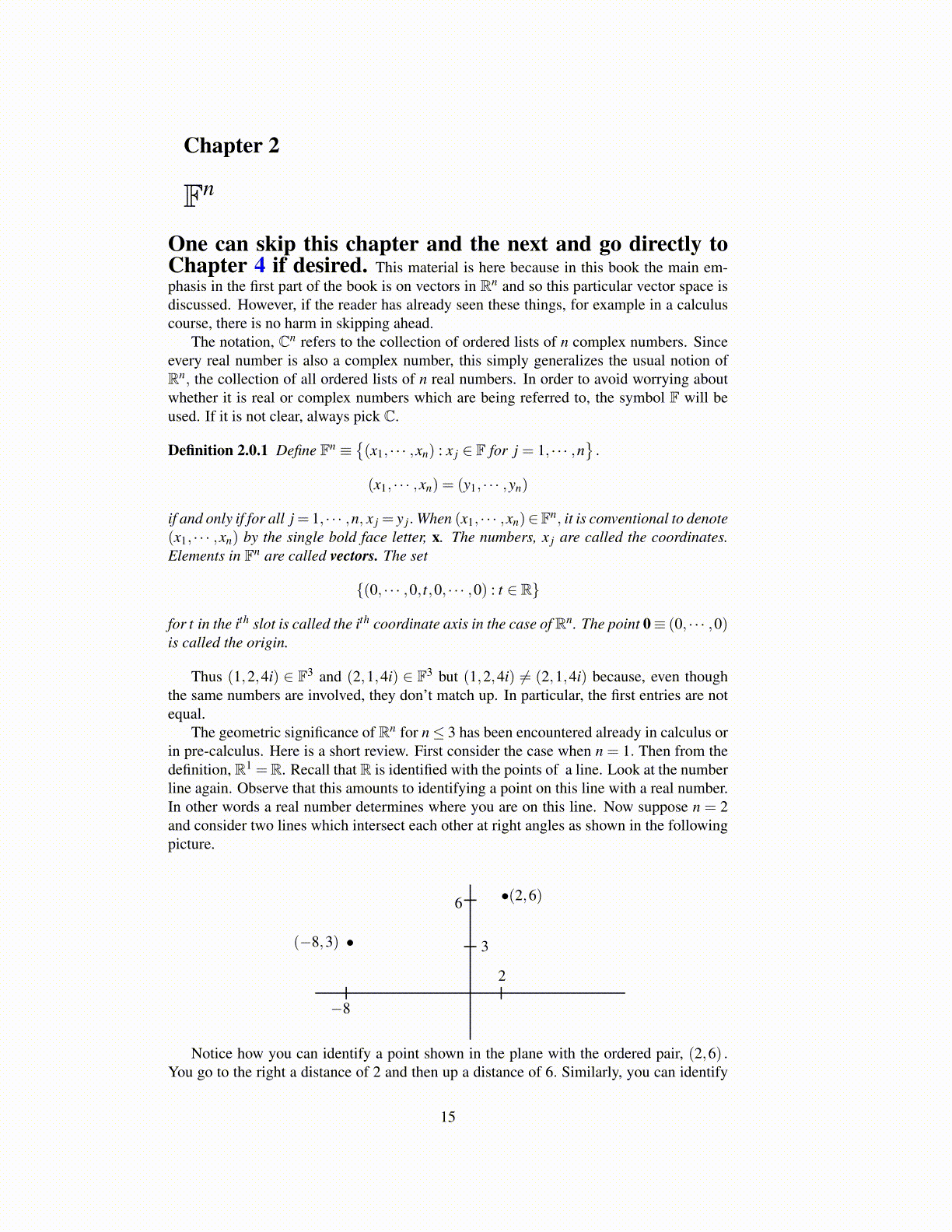
Chapter 2
Fn
One can skip this chapter and the next and go directly toChapter 4 if desired. This material is here because in this book the main em-phasis in the first part of the book is on vectors in Rn and so this particular vector space isdiscussed. However, if the reader has already seen these things, for example in a calculuscourse, there is no harm in skipping ahead.
The notation, Cn refers to the collection of ordered lists of n complex numbers. Sinceevery real number is also a complex number, this simply generalizes the usual notion ofRn, the collection of all ordered lists of n real numbers. In order to avoid worrying aboutwhether it is real or complex numbers which are being referred to, the symbol F will beused. If it is not clear, always pick C.
Definition 2.0.1 Define Fn ≡{(x1, · · · ,xn) : x j ∈ F for j = 1, · · · ,n
}.
(x1, · · · ,xn) = (y1, · · · ,yn)
if and only if for all j = 1, · · · ,n, x j = y j. When (x1, · · · ,xn)∈Fn, it is conventional to denote(x1, · · · ,xn) by the single bold face letter, x. The numbers, x j are called the coordinates.Elements in Fn are called vectors. The set
{(0, · · · ,0, t,0, · · · ,0) : t ∈ R}
for t in the ith slot is called the ith coordinate axis in the case of Rn. The point 0≡ (0, · · · ,0)is called the origin.
Thus (1,2,4i) ∈ F3 and (2,1,4i) ∈ F3 but (1,2,4i) ̸= (2,1,4i) because, even thoughthe same numbers are involved, they don’t match up. In particular, the first entries are notequal.
The geometric significance of Rn for n≤ 3 has been encountered already in calculus orin pre-calculus. Here is a short review. First consider the case when n = 1. Then from thedefinition, R1 =R. Recall that R is identified with the points of a line. Look at the numberline again. Observe that this amounts to identifying a point on this line with a real number.In other words a real number determines where you are on this line. Now suppose n = 2and consider two lines which intersect each other at right angles as shown in the followingpicture.
2
6 •(2,6)
−8
3•(−8,3)
Notice how you can identify a point shown in the plane with the ordered pair, (2,6) .You go to the right a distance of 2 and then up a distance of 6. Similarly, you can identify
15